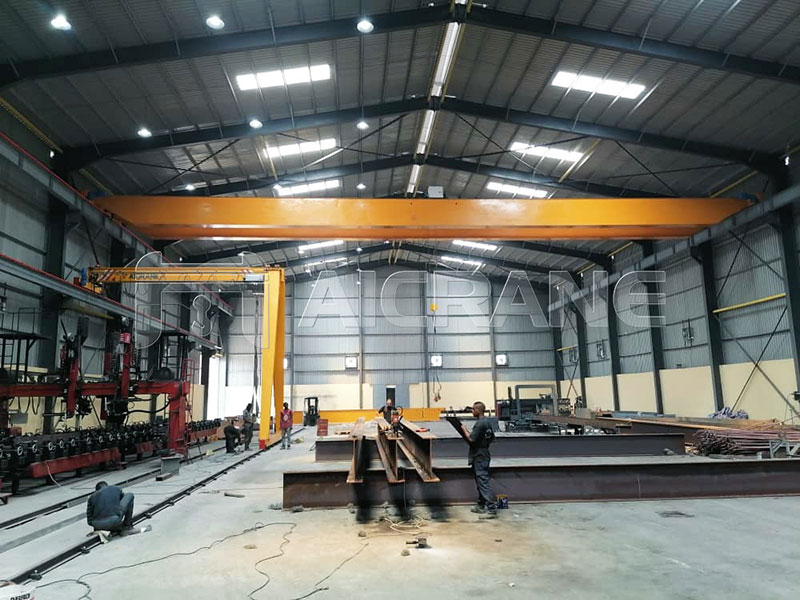Top running overhead cranes are essential for various industries, providing efficient material handling solutions. To ensure the longevity and optimal performance of these cranes, a proactive and well-executed maintenance plan is crucial. Regular maintenance not only prevents unexpected breakdowns but also enhances safety and efficiency in operations. In this comprehensive guide, we explore five essential tips for the maintenance of top running overhead cranes.
Regular Inspections and Lubrication
Routine inspections are the cornerstone of effective crane maintenance. Regularly scheduled inspections allow maintenance personnel to identify potential issues before they escalate, preventing costly repairs and downtime. Inspections should cover critical components such as hoists, trolleys, hooks, wire ropes, and electrical systems.
Lubrication is equally important in preventing premature wear and tear. Properly lubricated components reduce friction, enhance efficiency, and extend the lifespan of the crane. Establishing a lubrication schedule based on the manufacturer recommendations ensures that all moving parts operate smoothly.
Monitor Wire Ropes and Rigging
Wire ropes play a crucial role in the operation of top running overhead cranes. Regularly inspect wire ropes for signs of wear, corrosion, or damage. Look for broken strands, kinks, or deformities that may compromise the integrity of the ropes. If any issues are detected, it’s imperative to replace the wire ropes promptly.
Additionally, inspect the rigging components, including hooks, shackles, and slings. Ensure that these components are in good condition and free from defects. Rigging failures can lead to accidents and serious injuries, making their regular inspection a vital aspect of crane maintenance.

Electrical System Checks
The electrical system is the nerve center of a top running overhead crane. Regularly check the control panels, electrical wiring, and connections for any signs of wear, overheating, or damage. Test the functionality of limit switches, emergency stops, and overload protection devices to ensure they respond as intended.
Corrosion and moisture can adversely affect the electrical components of the crane, so inspections should include protection measures such as sealing connections and using corrosion-resistant materials. Engage qualified electricians for comprehensive electrical system checks and any necessary repairs.
Alignment and Leveling
Proper alignment and leveling are critical for the smooth and safe operation of a top running overhead crane. Misalignment can lead to uneven wear on wheels, rails, and other components, affecting the crane’s performance and stability. Regularly check and adjust wheel alignments to ensure that the crane moves along the runway tracks smoothly.
In addition to wheel alignments, ensure that the crane is level and plumb. An unlevel crane can result in skewed loads and increased stress on components. Routine checks with precision leveling tools can help maintain the crane’s proper alignment and contribute to its overall longevity.
Training and Documentation
Invest in comprehensive training programs for crane operators and maintenance personnel. Well-trained operators are more likely to detect early signs of issues and operate the heavy duty crane in a manner that minimizes wear and tear. Additionally, maintenance personnel should be proficient in conducting thorough inspections and performing routine maintenance tasks.
Maintain detailed documentation of all maintenance activities. This includes inspection reports, repair records, and a comprehensive maintenance schedule. Having a documented history allows for better tracking of the crane’s condition, helps identify recurring issues, and ensures that maintenance tasks are performed at the recommended intervals.
A well-maintained top running overhead crane is a reliable and efficient asset for any industrial facility. Implementing these five maintenance tips – regular inspections and lubrication, monitoring wire ropes and rigging, checking the electrical system, maintaining proper alignment and leveling, and investing in training and documentation – can significantly contribute to the longevity, safety, and performance of top running overhead cranes. A proactive approach to maintenance not only minimizes downtime but also enhances the overall efficiency and safety of material handling operations.